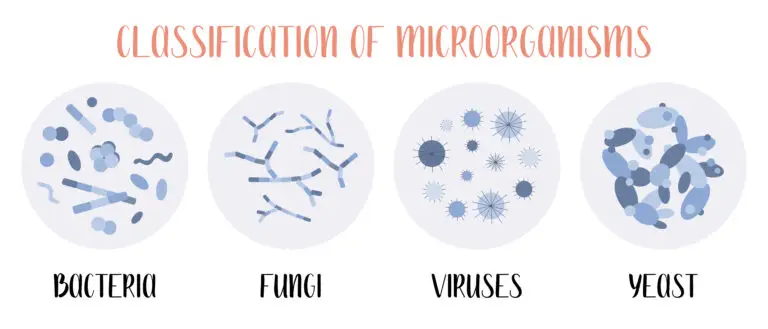Microorganism

Table of Contents
What is an Microorganism?
A microorganism, also known as a microbe, is a microscopic living organism that is too small to be seen with the naked eye. Microorganisms are diverse and include various types of life forms such as bacteria, archaea, viruses, fungi, algae, protozoa, and some small animals.
Despite their small size, microorganisms play crucial roles in various ecosystems, biogeochemical cycles, and have significant impacts on human health and industry.
Characteristics and Types of Microorganisms
Size
Microorganisms are typically measured in micrometers (µm) or nanometers (nm), and their size can range from a few micrometers down to fractions of a micrometer. They are generally smaller than the cells of plants, animals, and fungi.
Diversity
Microorganisms exhibit immense diversity in terms of morphology, physiology, and ecological roles. They can be found in various habitats, including soil, water, air, extreme environments (such as hot springs and deep-sea vents), and even within other organisms.
Bacteria
Bacteria are single-celled prokaryotic microorganisms. They have a simple cell structure without a true nucleus and are found in nearly every environment on Earth. Some bacteria are beneficial, contributing to processes such as nutrient cycling and digestion, while others can cause diseases.
Archaea
Archaea are also single-celled prokaryotes, similar to bacteria, but they differ in their genetic and biochemical characteristics. Archaea are known for their ability to thrive in extreme environments, such as acidic hot springs and deep-sea hydrothermal vents.
Viruses
Viruses are microscopic entities that consist of genetic material (either DNA or RNA) enclosed in a protein coat called a capsid. Viruses are not considered living organisms on their own and require a host cell to replicate.
Fungi
Fungi include microorganisms such as yeasts and molds. They are eukaryotic organisms with a complex cell structure and are involved in processes such as decomposition, nutrient cycling, and the production of antibiotics.
Algae
Algae are photosynthetic microorganisms that can be found in various aquatic environments. They play a crucial role in the production of oxygen and are important components of aquatic food webs.
Protozoa
Protozoa are single-celled eukaryotic microorganisms that are often classified as part of the animal kingdom. They are diverse in shape and function, and many are free-living in aquatic environments.
Microscopic Animals
Some small animals, such as certain nematodes and rotifers, are considered microorganisms due to their microscopic size. These micro-animals can be found in soil, water, and other habitats.
Human Microbiota
Microorganisms also inhabit the human body as part of the microbiota. The microbiota includes bacteria, viruses, fungi, and other microbes that reside on or within the human body, contributing to processes such as digestion and immune system function.
Related Links
Bioinformatics
Ecology
Microscope
Osmosis